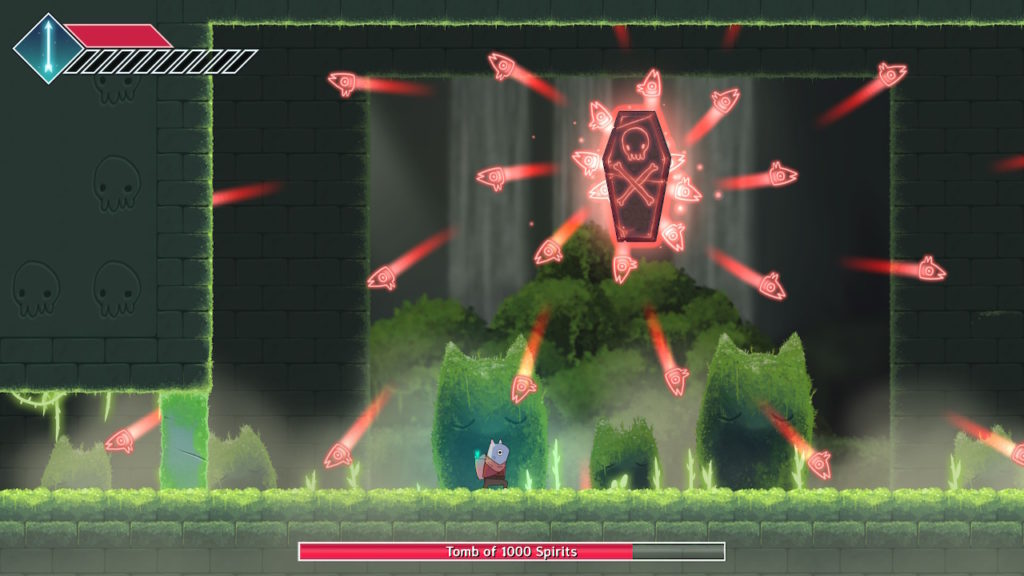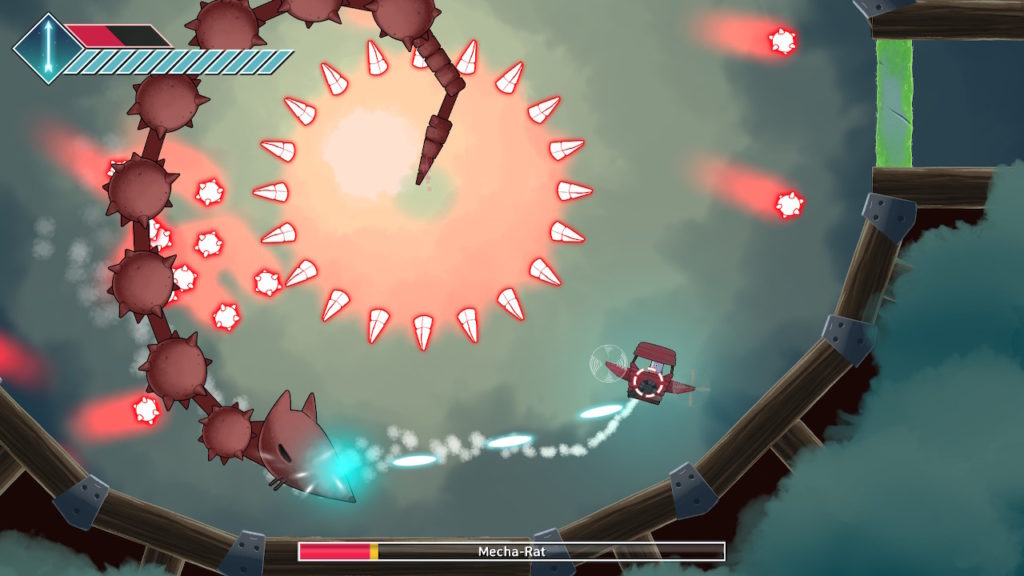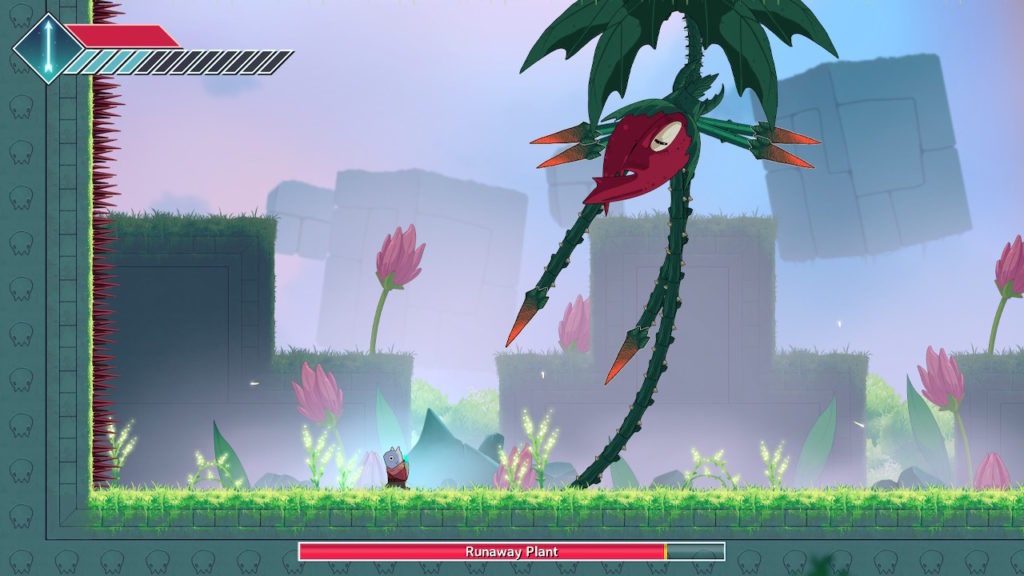More Info from Armor Games Studios
- Genre: Metroidvania
- Platform: Switch
- Also Available On: PC, Xbox One, Xbox Series X|S
There’s a lot of solid Metroidvanias out there, but there’s very few that I think get into the same neighborhood as a 2D Metroid title. The difference between ones that are simply alright and ones that really make that reach are never in the core mechanics, but in the little details. Islets is one that gets the little things right, and because of that it’s a fantastic title.

The core of a Metroidvania isn’t really that difficult to envision. You’ve basically got a game that encourages you to re-explore areas as you gain new abilities, have some fun combat segments, and really push some fun boss fights. Where games in the genre typically stumble for me is that they’ll focus on one of those sections and ignore the rest. Maybe their boss fights are fun, but it’s a slog traversing the environment. Maybe there’s too many enemies in the overworld, so it feels like you’re constantly slowed down. Islets is a game that manages to strike a balance that worked for me in how it handles all its details. There’s a few key points I wanted to focus on and they all tie into how well the game really gets some small things right that end up benefiting the whole.
The first one is that upgrades almost universally enhance traversal as a priority rather than combat. That may sound like the game is focusing on traversal over combat, but it’s not. A double jump opens up a bunch of opportunities for traversal, allowing you to clear larger gaps or taller walls. It also allows you to simply avoid easier enemies. However, what it also does is opens up a new dodge opportunity that is heavily used for boss fights. The same could be said for things like wall run or a ground pound. It obviously opens up opportunities that make traversal faster and more fun while opening up new paths. However, it also opens up new avoidance and offensive capabilities, which enhance the combat. Rather than focusing purely on weapon upgrades, they’re adding capabilities for your total toolset, which enhances the entire game, making the entire experience better for it.
That’s not to say that all upgrades are purely tied to traversal. In fact, there’s a lot of upgrades that are purely combat focused but are more power curve enhancements instead of toolset enhancements. They may be increased HP, more arrows to fire, passive reflect damage when the player takes damage, etc. What they all generally have in common though is that they are enhancing rather than changing your move set. This leads to a situation where reinforcement of new mechanics happens all the time through traversal-focused ones, rather than getting a combat upgrade that you don’t use for a while and forget about. It’s a nice way to maintain a power curve without it being overcomplicated.

They also aren’t shy about giving you temporary mechanics purely themed around the environment. One rainy section of the game gives you an umbrella that opens up gliding mechanic, paving the way for a temporary set of puzzles only in that section. One area has a bunch of moving platforms that have you dodging through spiky obstacles that only exist in that one area, which gives the traversal in the section a deliberately slower and more strategic pace. A section around the midpoint of the game has teleportation volumes, seemingly just for the sake of making a cool section of the game. These types of small-section one off mechanics really break up the monotony of traversal by making the player change how they’re going about things just enough without breaking the core of what’s there.
It also helps that there are entire sections of the game that take place in a twin-stick style shoot em up. These come up as you travel between the game’s core island sections and effectively end up acting as a nice breather. Mechanically each one has a bit of typical 2D projectile avoidance and usually some core mechanic you have to deal with (ex: a boss focused on boomerangs, or a boss focused on grappling themselves across the arena). They aren’t necessarily difficult and they aren’t overly common, but they’re there just enough to be a change of pace battle before you get going back into platforming.

Difficulty is another one of those areas where I think they really played a nice balance. This game wasn’t one where I was immune from death, and I think for the most part I died to most of the bosses at least a couple times while I was learning mechanics. However, there were a couple things that really worked out well for me in that regard.
One of the keys was that death never felt like progress loss. It was simply a return back to the last save point. This is completely opposite of a game like Hollow Knight, where I felt like death runs were such a negative deterrence that I never wanted to take risks. Here, I didn’t mind it. Save points felt like they were spread out enough to encourage the challenge, but not too far as to be a slog. It was helped by the fact that any sub-boss fights never came back once completed, so if you got through a couple of them then died, you didn’t have to redo them. The frequency of combat along traversal was also low enough that it didn’t feel like I was constantly in combat, but instead being in combat in a way that made sense based on the particular room I happened to be in.
It was also incredibly helpful that every major boss fight had a save point immediately before the boss. This let the boss be challenging on its own, rather than being a challenge because of what you had to do to approach it. Each boss definitely had its set of mechanics that had to be learned, so being in a place where I could learn the mechanics and immediately be back in a fight if I died was an incredibly good way to quickly positively reinforce the learning, rather than having to spend a bunch of time between attempts doing a run back after death.
Lmaooooooooo pic.twitter.com/yhDJMgs1Wv
— Dan Weiss (@schenksmill) April 11, 2023
Ultimately this is just a very well made Metroidvania. It seems to understand what the genre should be for a lot of people. It plays a good balance between encouraging exploration and traversal, while still having a core combat base. It has enough difficulty to be challenging, but isn’t overbearing in negatively impacting the player. And frankly, it’s just fun to look at. This is an entry in the genre that is simply worth playing.
